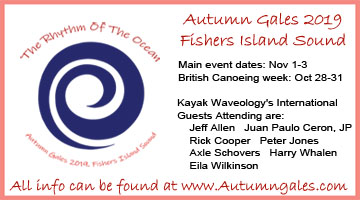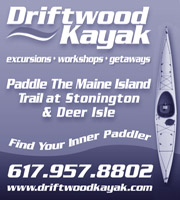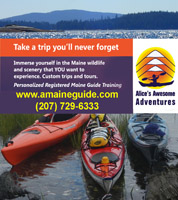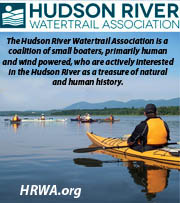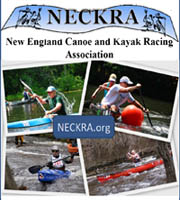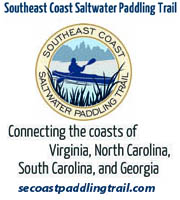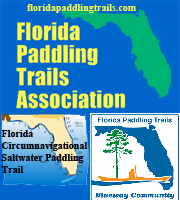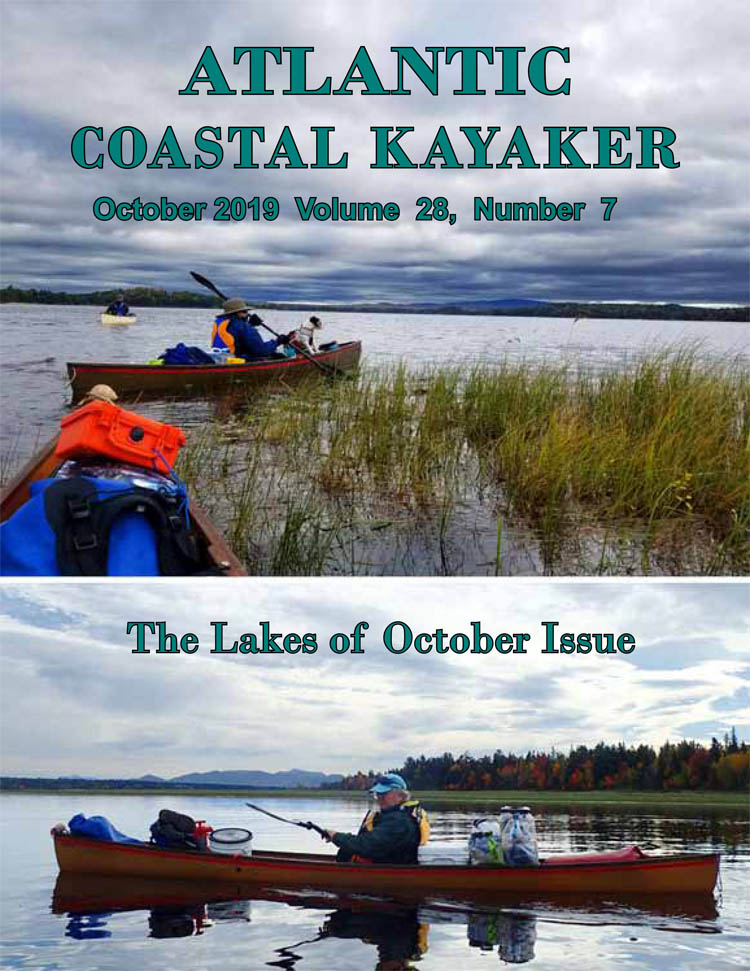|
Marshes respond to increased C02, not all plastic is forever, Coast Guard rescues, and more.

|

|
My First Blackburn in a Ski
By Melissa Meyer
Another Blackburn is in the books. It's such a fun race and supportive community, I'm always excited to sign up. Then, come the 2/3 or 3/4 mark, I'm even more excited to be done with it.

|
|
The "Northern Summit" Trip
A Journey After Thoreau
By Tamsin Venn
After many campground-based day trips in the Adirondacks with the Rhode Island Canoe & Kayak Club, we signed up for this five-day expedition led by RICKA Wilderness Chair Chuck Horbert. We felt confident that Chuck was familiar with our ways and vice versa, so confidence could be had by all without a lot of unknowns.

|
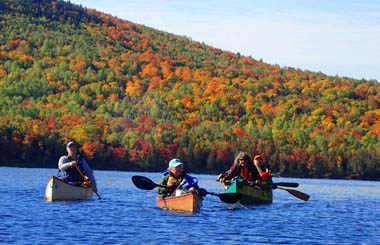
|
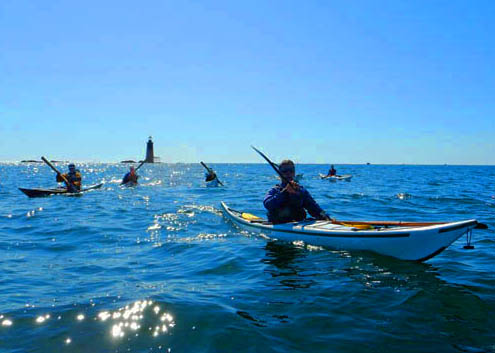
|
Maine Greenland Kayak Festival
By Liz Johnson
Kayakers around the world are drawn to the simplicity and grace of the Greenland paddle. It's the perfect tool for rolling, but its application goes far beyond rolling and paddling in protected waters.

|
|
The Last Lobster
Boom or Bust for Maine's Greatest Fishery?
by Christopher White
Review by Tamsin Venn

|
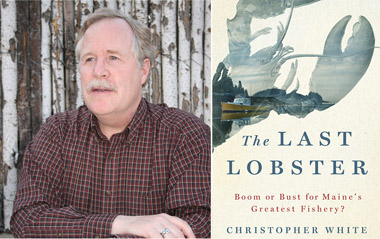
|
|

|
Seaweed Chronicles
A World at the Water's Edge
by Susan Hand Shetterly
Review by Carl Little

|
|
|
Find incredible deals or post your own gear for sale.
Klassified ads for personally-owned gear are free to subscribers; $0.25 per word, per issue for all others. Photos are $5 each. We will run your ad for two issues. Deadline for ad submission is the first of the month before the issue of publication. NOTE: If seller is advertising more than one item, contact info is after the LAST item.

|
|
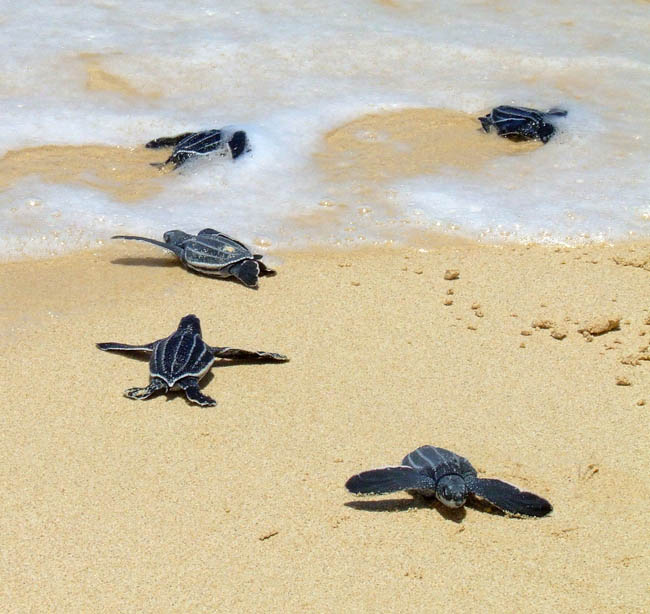
U.S. Fish and Wildlife Service Southeast Region - Leatherbacks crawling to the sea.
|
|
|
The leatherback sea turtle (Dermochelys coriacea), sometimes called the lute turtle or leathery turtle or simply the luth, is the largest of all living turtles and is the fourth-heaviest modern reptile behind three crocodilians. It is the only living species in the genus Dermochelys and family Dermochelyidae. It can easily be differentiated from other modern sea turtles by its lack of a bony shell, hence the name. Instead, its carapace is covered by skin and oily flesh.
Relatives of modern leatherback turtles have existed in some form since the first true sea turtles evolved over 110 million years ago during the Cretaceous period. The dermochelyids are relatives of the family Cheloniidae, which contains the other six extant sea turtle species. However, their sister taxon is the extinct family Protostegidae that included other species that did not have a hard carapace.
Leatherback turtles have the most hydrodynamic body design of any sea turtle, with a large, teardrop-shaped body. A large pair of front flippers powers the turtles through the water. Like other sea turtles, the leatherback has flattened forelimbs adapted for swimming in the open ocean. Claws are absent from both pairs of flippers. The leatherback's flippers are the largest in proportion to its body among extant sea turtles. Leatherback's front flippers can grow up to 2.7 m (8.9 ft) in large specimens, the largest flippers (even in comparison to its body) of any sea turtle.
The leatherback turtle is a species with a cosmopolitan global range. Of all the extant sea turtle species, D. coriacea has the widest distribution, reaching as far north as Alaska and Norway and as far south as Cape Agulhas in Africa and the southernmost tip of New Zealand. The leatherback is found in all tropical and subtropical oceans, and its range extends well into the Arctic Circle.
The three major, genetically distinct populations occur in the Atlantic, eastern Pacific, and western Pacific Oceans. While nesting beaches have been identified in the region, leatherback populations in the Indian Ocean remain generally unassessed and unevaluated.
Recent estimates of global nesting populations are that 26,000 to 43,000 females nest annually, which is a dramatic decline from the 115,000 estimated in 1980.
|
|
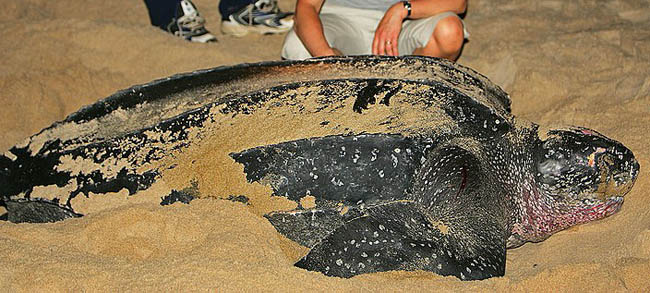
Steve Garvie, Dunfermline, Fife, Scotland: Egg-laying Leatherback. License.
|
|
